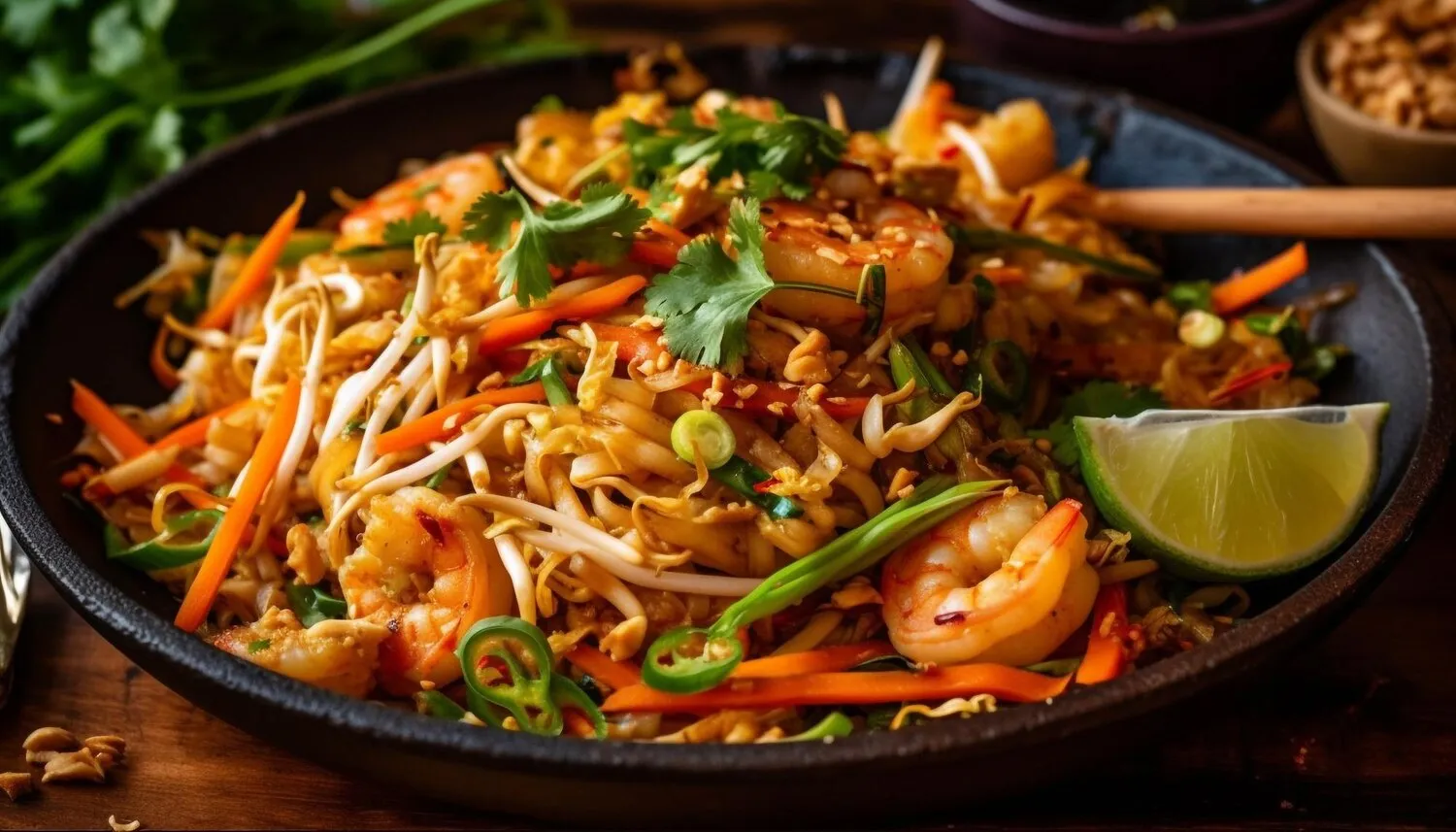
Dan Dan Noodle
Noodles in a spicy and savory sauce, often containing ground pork, preserved vegetables, and chili oil.
Nutrition Facts
* The % Daily Value (DV) tells you how much a nutrient in a serving of food contributes to a daily diet. 2,000 calories a day is used for general nutrition advice.
Dan Dan Noodles originated in Chengdu, the capital of Sichuan province in China. They were originally sold by street vendors who carried the ingredients in two baskets on a bamboo pole (dan dan). This humble beginning shaped the dish into a quick, affordable, and flavorful meal.
Dan Dan Noodles are deeply embedded in Sichuan cuisine and culture, reflecting the region's emphasis on bold flavors and communal eating.
Street Food Heritage
Originally a street food, Dan Dan Noodles maintain their association with quick, affordable, and accessible dining. They are a staple in Sichuan's vibrant street food scene.
Communal Eating
While often enjoyed as a personal serving, the ingredients and preparation methods reflect the communal spirit of Chinese cooking, with flavors designed to be shared and enjoyed together.
Regional Pride
Dan Dan Noodles are a symbol of Sichuan culinary pride, showcasing the region's unique ingredients and techniques, particularly the use of Sichuan peppercorns and chili oil.
Dan Dan Noodles are known for their intense and complex flavors: spicy, savory, nutty, and slightly sweet, all perfectly balanced.
The defining flavor is *mala*, a numbing spiciness from Sichuan peppercorns combined with the heat of chili oil. This is complemented by a rich, savory base often built on soy sauce, sesame paste, and sometimes Chinese black vinegar. Ground pork adds umami and texture, while preserved vegetables like ya cai (preserved mustard greens) provide a salty and slightly funky note. Sugar balances the spice and acidity, creating a harmonious and addictive flavor profile.
Sichuan Peppercorns are Key
Don't skimp on the Sichuan peppercorns! Toast them lightly and grind them fresh to maximize their numbing and aromatic qualities. Adjust the amount to your spice preference.
Good Quality Chili Oil Matters
Homemade chili oil is ideal, but if you're buying it, look for one with chili flakes and sediment. This adds depth of flavor and texture.
Noodle Choice
Thin, slightly alkaline noodles (like those used for ramen or wheat noodles) work best. They have a good chew and absorb the sauce well. Don't overcook them.
Balance the Sauce
Taste and adjust the sauce until you achieve a perfect balance of spicy, savory, nutty, and slightly sweet. Don't be afraid to experiment with the ratios of soy sauce, vinegar, sesame paste, and sugar.
Explore additional Noodles dishes and restaurants
Explore NoodlesDiscover top dining spots and culinary experiences in Seattle.
Explore SeattleLearn more about the food culture, restaurant scene, and culinary heritage of United States.
Explore United States